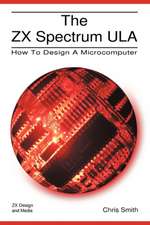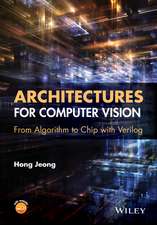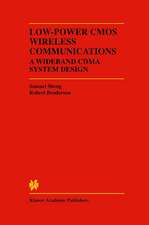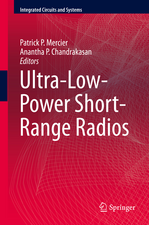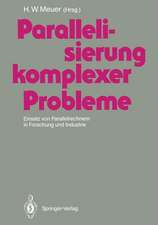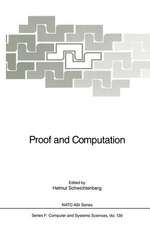Low Power Digital CMOS Design
Autor Anantha P. Chandrakasan, Robert W. Brodersenen Limba Engleză Hardback – 30 iun 1995
Potentially one of the most important techniques involves combining architecture optimization with voltage scaling, allowing a trade-off between silicon area and low-power operation. Architectural optimization enables supply voltages of the order of 1 V using standard CMOS technology. Several techniques can also be used to minimize the switched capacitance, including representation, optimizing signal correlations, minimizing spurious transitions, optimizing sequencing of operations, activity-driven power down, etc. The high- efficiency of DC-DC converter circuitry required for efficient, low-voltage and low-current level operation is described by Stratakos, Sullivan and Sanders. The application of various low-power techniques to a chip set for multimedia applications shows that orders-of-magnitude reduction in power consumption is possible.
The book also features an analysis by Professor Meindl of the fundamental limits of power consumption achievable at all levels of the design hierarchy. Svensson, of ISI, describes emerging adiabatic switching techniques that can break the CV2f barrier and reduce the energy per computation at a fixed voltage. Srivastava, of AT&T, presents the application of aggressive shut-down techniques to microprocessor applications.
| Toate formatele și edițiile | Preț | Express |
|---|---|---|
| Paperback (1) | 950.52 lei 6-8 săpt. | |
| Springer Us – 4 oct 2012 | 950.52 lei 6-8 săpt. | |
| Hardback (1) | 956.81 lei 6-8 săpt. | |
| Springer Us – 30 iun 1995 | 956.81 lei 6-8 săpt. |
Preț: 956.81 lei
Preț vechi: 1166.84 lei
-18% Nou
Puncte Express: 1435
Preț estimativ în valută:
183.09€ • 195.78$ • 152.65£
183.09€ • 195.78$ • 152.65£
Carte tipărită la comandă
Livrare economică 18 aprilie-02 mai
Preluare comenzi: 021 569.72.76
Specificații
ISBN-13: 9780792395768
ISBN-10: 079239576X
Pagini: 409
Ilustrații: XI, 409 p.
Dimensiuni: 155 x 235 x 24 mm
Greutate: 0.77 kg
Ediția:1995
Editura: Springer Us
Colecția Springer
Locul publicării:New York, NY, United States
ISBN-10: 079239576X
Pagini: 409
Ilustrații: XI, 409 p.
Dimensiuni: 155 x 235 x 24 mm
Greutate: 0.77 kg
Ediția:1995
Editura: Springer Us
Colecția Springer
Locul publicării:New York, NY, United States
Public țintă
ResearchCuprins
1 Introduction.- 1.1 Overview of Book.- 2 Hierarchy of Limits of Power.- 2.1 Introduction.- 2.2 Background.- 2.3 Theoretical Limits.- 2.4 Quasi-Adiabatic Microelectronics.- 2.5 Practical Limits.- 2.6 Conclusion.- 3 Sources of Power Consumption.- 3.1 Switching Component of Power.- 3.2 Short-circuit Component of Power.- 3.3 Leakage Component of Power.- 3.4 Static Power.- 3.5 Summary.- 4 Voltage Scaling Approaches.- 4.1 Reliability-Driven Voltage Scaling.- 4.2 Technology-Driven Voltage Scaling.- 4.3 Energy x Delay Minimum Based Voltage Scaling.- 4.4 Voltage Scaling Through Optimal Transistor Sizing.- 4.5 Voltage Scaling Using Threshold Reduction.- 4.6 Architecture-Driven Voltage Scaling.- 4.7 Summary.- 5 DC Power Supply Design in Portable Systems.- 5.1 Voltage Regulation Enhances System Run-time.- 5.2 DC-DC Converter Topology Selection.- 5.3 Converter Miniaturization.- 5.4 Circuit Optimizations for High Efficiency.- 6 Adiabatic Switching.- 6.1 Adiabatic Charging.- 6.2 Adiabatic Amplification.- 6.3 Adiabatic Logic Gates.- 6.4 Stepwise Charging.- 6.5 Pulsed-Power Supplies.- 6.6 Summary.- 6.7 Acknowledgments.- 7 Minimizing Switched Capacitance.- 7.1 Algorithmic Optimization.- 7.2 Architecture Optimization.- 7.3 Logic Optimization.- 7.4 Circuit Optimization.- 7.5 Physical Design.- 7.6 Summary.- 8 Computer Aided Design Tools.- 8.1 Previous Work.- 8.2 Application of Transformations to Minimize Power.- 8.3 Cost Function.- 8.4 Optimization Algorithm.- 8.5 Examples and Results.- 8.6 Summary.- 9 A Portable Multimedia Terminal.- 9.1 Technology Trends for Low Power Portable Systems.- 9.2 System Partitioning for Low-power.- 9.3 Architecture of the Portable Multimedia Terminal.- 9.4 Low Power Implementation of the I/O Processing Modules.- 9.5 System Implementation.- 9.6 Summary.- 10 LowPower Programmable Computation.- 10.1 Architectural Approaches to Low-power.- 10.2 Shutdown Techniques.- 10.3 Architecture-Driven Voltage Reduction.- 10.4 Summary.- 11 Conclusions.




